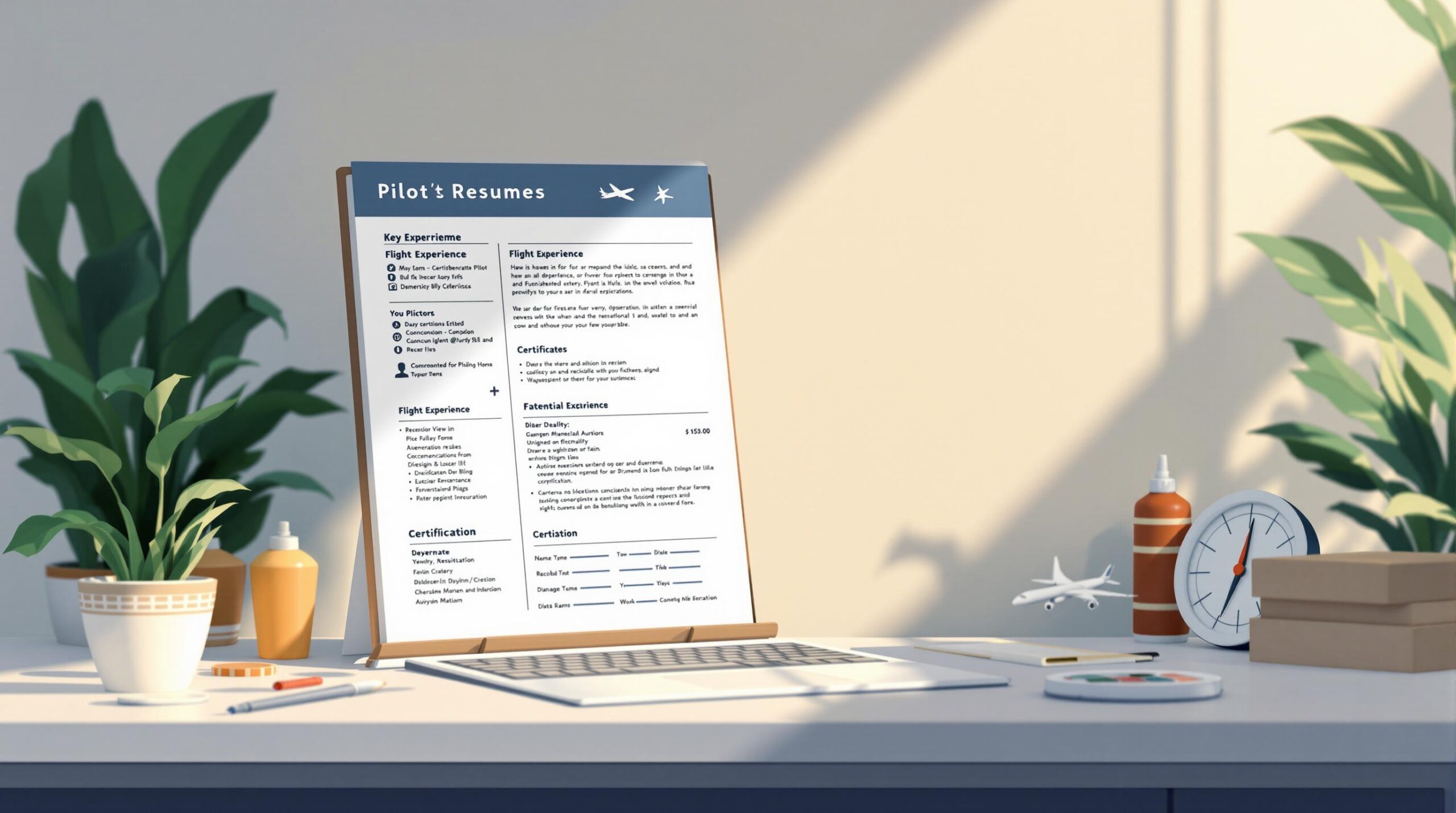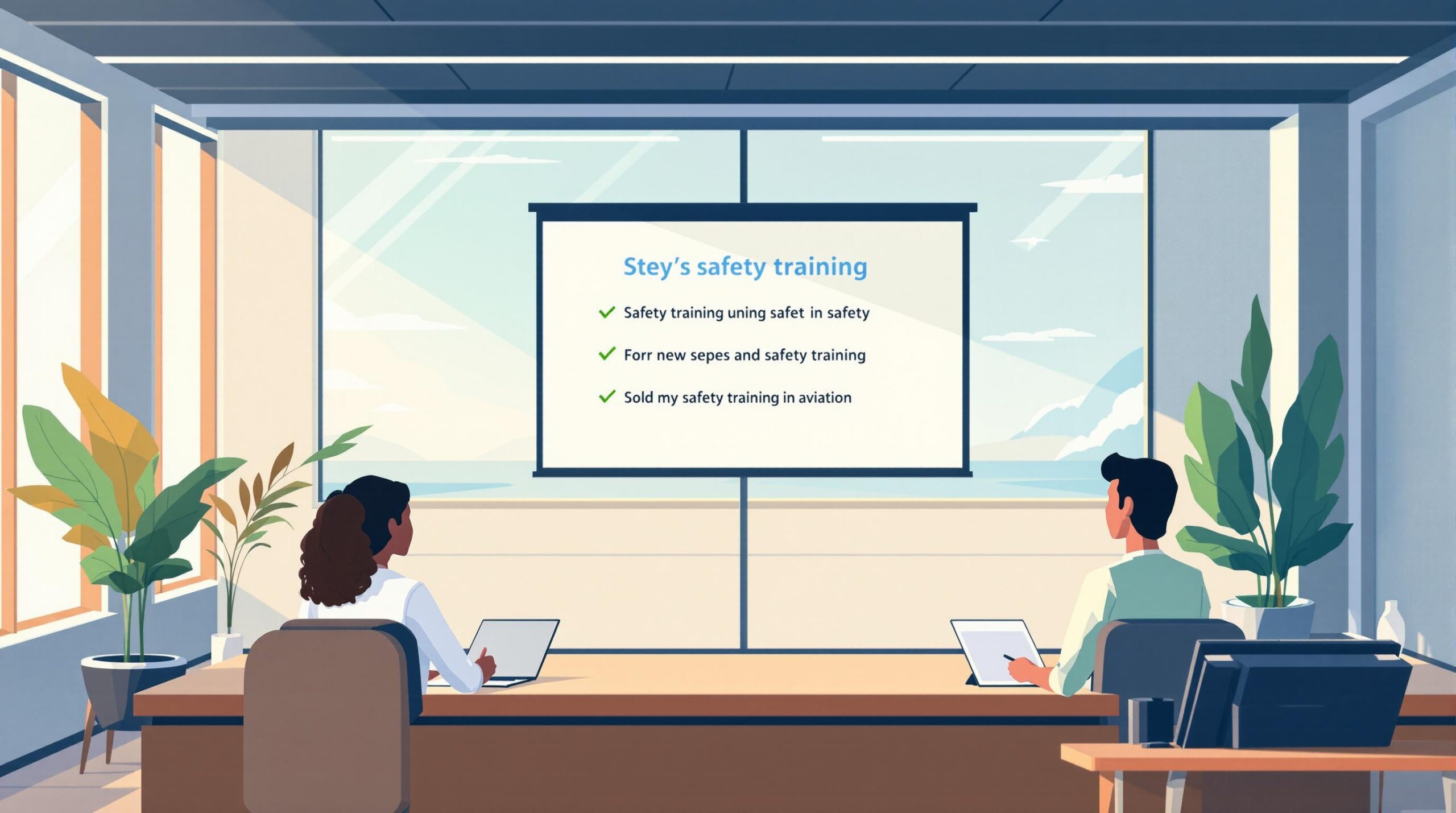Want to land your dream pilot job? Your resume is the key. A strong pilot resume highlights your flight hours, certifications, and safety record while using aviation-specific keywords to pass Applicant Tracking Systems (ATS). Here’s what you need to include:
- Contact Information: Name, email, phone, and certifications.
- Profile Summary: Total flight hours, key qualifications, and career goals.
- Professional Experience: Roles, aircraft types, and achievements.
- Education and Certifications: Academic background, licenses, and type ratings.
Quick Tips:
- Use a reverse-chronological format.
- Include action verbs like "Operated" or "Commanded."
- Keep it updated with new certifications and flight hours.
- Use tools like Jobscan or Pilot Pathfinder to optimize for ATS.
Your resume should be clear, concise, and tailored to the airline you’re applying to. Ready to stand out? Let’s dive in.
How to Write a Pilot CV – Step by Step Guide
Breaking Down the Key Parts of a Pilot Resume
Creating a pilot resume that stands out means including the right sections to highlight your aviation skills and qualifications. Each part serves a purpose in showcasing your professional background to employers.
Key Sections for a Pilot Resume
Make sure your resume includes these important parts [1]:
- Contact Information: Include your name, email, phone number, and relevant certifications.
- Profile Summary and Flight Hours: Provide a brief overview of your qualifications, career goals, and a breakdown of your flight hours.
- Professional Experience: Detail your key aviation roles and responsibilities.
- Education and Certifications: List your academic background and flight training credentials.
Tips for Structuring Your Pilot Resume
The reverse-chronological format is widely used in the aviation industry because it emphasizes your most recent experience [2]. While other formats like functional or combination styles can work for career changes or highlighting varied skills, they’re less common in this field.
Choosing the Right Words
To grab attention and pass ATS (Applicant Tracking System) checks, include aviation-specific action verbs and keywords like:
- Commanded
- Operated
- Implemented
- Coordinated
- Conducted
Step-by-Step Instructions for Writing a Pilot Resume
Now that we’ve covered the basics, let’s break down how to craft each section of your pilot resume effectively.
Writing a Clear Profile Summary
Your profile summary should quickly showcase your top qualifications and total flight hours. Make it specific to the airline you’re applying to by highlighting the skills and certifications they value most.
For instance, a strong profile summary could look like this:
"ATP-certified commercial pilot with 5,000 total flight hours, including 2,000 hours PIC in multi-engine aircraft. Specialized in Boeing 737 operations with comprehensive CRM and SMS training certification." [1]
With a strong summary in place, move on to presenting your professional experience to back up your qualifications.
Organizing Work Experience
List your aviation roles in reverse chronological order, focusing on accomplishments and key responsibilities. Be sure to include the airline name, aircraft type, position, and employment dates.
Here’s a simple format to follow:
| Component | Example Content |
|---|---|
| Position | Captain, XYZ Airlines (2018-2022) |
| Aircraft | Boeing 737 |
| Achievements | • Introduced updated safety protocols • Led crew training programs • Maintained an impeccable safety record • Logged 3,000 PIC hours |
Once your work history is clear and detailed, it’s time to highlight your education and certifications.
Listing Education and Certifications
Start with your most advanced aviation-related qualifications. Include certificates, type ratings, and any specialized training that aligns with the role you’re targeting. These details should reinforce your expertise and make your application stand out [1].
sbb-itb-de05b1b
Tools and Software to Help with Pilot Resumes
Crafting a professional pilot resume doesn’t have to be overwhelming. With the right tools, you can create a polished, airline-ready resume that meets industry standards and navigates applicant tracking systems (ATS) with ease.
AI Tools for Resume Writing
AI-driven platforms like Jobscan can simplify the process by aligning your resume with airline-specific requirements. These tools analyze job descriptions, pinpoint missing keywords, and suggest tailored content to help your resume pass ATS checks. By focusing on what airlines are looking for, these tools ensure your qualifications are presented clearly and effectively [1].
Pilot Pathfinder: A Specialized Tool for Pilots

Pilot Pathfinder, available through its Pro plan ($29/month), is designed specifically for pilots. It offers a suite of features to streamline the application process, including a resume builder, logbook integration, and application auto-fill. This aviation-focused tool ensures your resume meets airline standards while saving you time on submissions [1].
Key features of Pilot Pathfinder include:
- Helping you create concise, impactful profile summaries
- Structuring work experience to align with ATS criteria
- Highlighting certifications in a clear, professional manner
- Simplifying the application process from start to finish
Conclusion: Final Tips for a Strong Pilot Resume
Building a pilot resume that stands out takes careful attention to detail and a smart approach. As the aviation field changes, your resume needs to stay current and relevant.
Keep It Updated
Refresh your resume every 6–12 months with new certifications, flight hours, and training. Pay attention to how your applications perform – review responses and get feedback to improve. Airlines often adjust their hiring criteria, so keeping your resume up-to-date ensures you’re always prepared.
Use Technology to Your Advantage
Take advantage of tools like AI platforms or aviation-specific software. These can help you craft a polished resume that aligns with industry expectations while saving you time.
Be Clear and Relevant
Focus on your aviation accomplishments and use strong action words like "operated" or "managed" to showcase your skills. Highlight key areas such as:
- Certifications (add as you earn them)
- Flight hours (update regularly)
- Training and qualifications (review periodically)
- Technical skills and systems expertise (refresh annually)
Present Yourself Professionally
Think of your resume as a living document that grows with your career. By keeping the format clean, using the right keywords, and leveraging modern tools, you’ll create a resume that grabs attention and opens doors in the aviation industry.
FAQs
Here are answers to some common questions about crafting an effective pilot resume.
How can you improve your pilot resume?
To make your pilot resume stand out, focus on these areas:
Professional Presentation
Leave out non-aviation roles or unrelated hobbies unless they showcase skills that are useful in aviation. Tailor your resume to the specific airline by reflecting their values and addressing the job description [2].
Content Quality
Emphasize your skills and highlight a strong safety record. Check for accuracy and proofread carefully to avoid mistakes that might hurt your credibility [2].
Industry Terminology
Stick to aviation-specific terms but avoid overloading your resume with acronyms or unnecessary jargon [2].
Once polished, make sure your resume includes all the critical details hiring managers look for.
What should you include on a pilot resume?
Here are the key elements every pilot resume needs:
| Core Skills Category | Key Elements to Include |
|---|---|
| Technical Expertise | Flight navigation, Proficiency with flight systems |
| Safety & Operations | Emergency procedures, Protocols, Situational awareness |
| Leadership | Crew coordination, Team management, Decision-making |
| Communication | Teamwork, Clear communication, Professional interaction |
| Problem-Solving | Handling dynamic conditions, Quick decision-making |
Professional Experience
Use strong action verbs like "operated", "managed", or "coordinated" to showcase your accomplishments [1][2].
Clear Organization
Highlight certifications and flight hours prominently at the top to grab attention right away [1][2].




